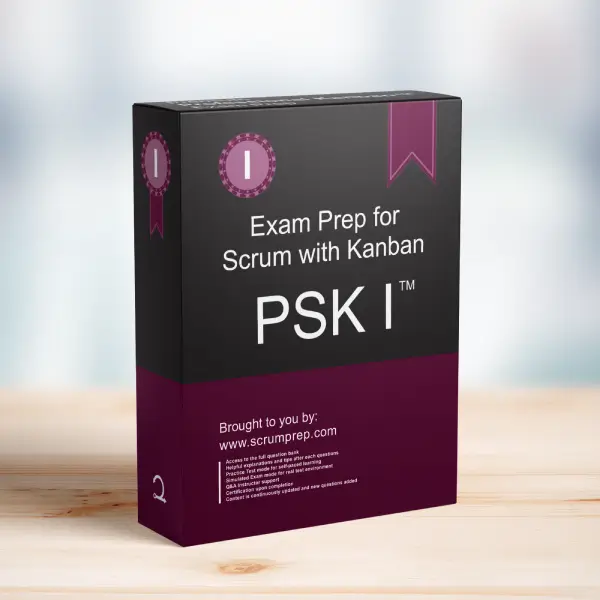Best Uses for the Work Item Aging Metric
Understanding the applications of the Work Item Aging metric is crucial for optimizing workflow and improving team performance in Scrum with Kanban practices.
Exam Question
What’s the best use for the Work Item Aging metric?
(choose the best two answers)
A. To help the team inspect and adapt their Sprint in the Daily Scrum
B. To help the team inspect and adapt their process and definition of Workflow in their Retrospective
C. To influence the team’s SLE
D. As an indicator of the Work Item size
E. As a leading indicator to the length of feedback loop for that Work Item
Correct Answers
A. To help the team inspect and adapt their Sprint in the Daily Scrum
E. As a leading indicator to the length of feedback loop for that Work Item
Explanation
Correct Answers
A. To help the team inspect and adapt their Sprint in the Daily Scrum:
The Work Item Aging metric is valuable during Daily Scrums to monitor the progress of work items. It helps the team identify items that are taking longer than expected and allows for immediate adjustments and focus on potential bottlenecks or issues.
E. As a leading indicator to the length of feedback loop for that Work Item:
Work Item Aging serves as a leading indicator of how long it is taking to receive feedback on a work item. If an item has been in progress for an extended period, it signals a delay in the feedback loop, prompting the team to address the issue to maintain a healthy flow of work.
Why the Other Options Are Less Effective
B. To help the team inspect and adapt their process and definition of Workflow in their Retrospective:
While Work Item Aging can provide insights for retrospectives, its primary use is more immediate and tactical, focusing on day-to-day adjustments rather than retrospective analysis.
C. To influence the team’s SLE:
The Service Level Expectation (SLE) is generally influenced by broader metrics like cycle time and throughput. Work Item Aging helps monitor current progress rather than setting expectations.
D. As an indicator of the Work Item size:
Work Item Aging does not directly indicate the size of a work item. It measures how long an item has been in progress, which can be influenced by factors other than size, such as complexity or dependencies.
Importance of Work Item Aging
- Immediate Feedback: Provides real-time information on the status of work items, allowing for quick adjustments.
- Identifying Bottlenecks: Helps identify items that are stuck or taking longer than expected, enabling the team to address issues promptly.
- Improving Flow: Ensures that work items move smoothly through the workflow, maintaining a consistent and efficient delivery pace.
Effective Practices for Using Work Item Aging
- Daily Monitoring: Regularly review Work Item Aging during Daily Scrums to stay on top of progress and address any delays.
- Focus on Stuck Items: Pay special attention to items that have been in progress for a long time and take action to resolve any issues.
- Use as a Feedback Loop Indicator: Use the metric to ensure that feedback loops are timely and effective, keeping the workflow healthy.
Relevance to the PSK I Exam
Understanding how to use Work Item Aging effectively is crucial for the PSK I exam. It demonstrates knowledge of key Kanban metrics that support effective workflow management and continuous improvement.
Key Takeaways
- Work Item Aging is best used to help the team inspect and adapt their Sprint in the Daily Scrum and as a leading indicator of the feedback loop’s length.
- It provides immediate insights into the progress of work items and helps identify and address delays promptly.
- Regular monitoring and use of this metric can significantly improve workflow efficiency and team performance.
Conclusion
The Work Item Aging metric is most effectively used to help the team inspect and adapt their Sprint in the Daily Scrum and as a leading indicator of the length of the feedback loop for that work item. For more information on preparing for the PSK I exam, visit our Professional Kanban PSK I™ Exam Prep.



